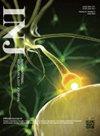Reply to "Interstitial Cystitis - A Consequence of Weakened Uterosacral Ligaments Failing to Support Visceral Plexuses and Bladder Stretch Receptors and Therefore Potentially Curable?"
IF 1.8
3区 医学
Q3 UROLOGY & NEPHROLOGY
引用次数: 0
Abstract
Copyright © 2022 Korean Continence Society This is an Open Access article distributed under the terms of the Creative Commons Attribution Non-Commercial License (https://creativecommons.org/licenses/by-nc/4.0/) which permits unrestricted non-commercial use, distribution, and reproduction in any medium, provided the original work is properly cited. Corresponding author: Tomohiro Ueda https://orcid.org/0000-0002-9611-5691 Department of Urology, Ueda Clinic, 6F CUBEOIKE, 599 Bano-cho, Anekojisagaru, Karasuma-dori, Nakagyo-ku, Kyoto 604-8172, Japan Email: tom328177@gmail.com Submitted: November 29, 2021 / Accepted after revision: June 9, 2022 To the editor, Interstitial cystitis/bladder pain syndrome (IC/BPS) is a heterogeneous disease consisting of distinct subgroups of patients who have different underlying pathophysiology. Thus, the proposal by Prof. Petros that loose or damaged uterosacral ligaments (USLs) may be an important etiology outside the bladder to induce or worsen the symptoms of IC/BPS due to altered urothelial receptor sensitivity is interesting. However, for the proper diagnosis and treatment of IC/BPS, it is necessary to first identify bladder-centric pathophysiology including Hunner lesions by using cystoscopy and also prove that identified bladder mucosal abnormalities are the causes of bladder pain, for example, as shown by pain reduction following intravesical lidocaine instillation in the recent dimethyl sulfoxide clinical trial in IC/BPS patients [1,2]. Then, in the case that bladdercentric pathophysiology is less likely to be involved in IC/BPS symptoms, outside-bladder etiology such as the lax USL discussed here should be considered as a cause of bladder symptoms in IC/BPS patients. There will be no bright future for IC/ BPS without the following 3 steps: (1) understanding the symptoms, (2) detecting abnormal findings in or outside the bladder, and (3) verifying that the abnormality is the cause of the symptoms. • Conflict of Interest: No potential conflict of interest relevant to this article was reported.回复“间质性膀胱炎——子宫骶韧带减弱不能支持内脏丛和膀胱拉伸受体的结果,因此有可能治愈?”
本文章由计算机程序翻译,如有差异,请以英文原文为准。
求助全文
约1分钟内获得全文
求助全文
来源期刊

International Neurourology Journal
UROLOGY & NEPHROLOGY-
CiteScore
4.40
自引率
21.70%
发文量
41
审稿时长
4 weeks
期刊介绍:
The International Neurourology Journal (Int Neurourol J, INJ) is a quarterly international journal that publishes high-quality research papers that provide the most significant and promising achievements in the fields of clinical neurourology and fundamental science. Specifically, fundamental science includes the most influential research papers from all fields of science and technology, revolutionizing what physicians and researchers practicing the art of neurourology worldwide know. Thus, we welcome valuable basic research articles to introduce cutting-edge translational research of fundamental sciences to clinical neurourology. In the editorials, urologists will present their perspectives on these articles. The original mission statement of the INJ was published on October 12, 1997.
INJ provides authors a fast review of their work and makes a decision in an average of three to four weeks of receiving submissions. If accepted, articles are posted online in fully citable form. Supplementary issues will be published interim to quarterlies, as necessary, to fully allow berth to accept and publish relevant articles.
 求助内容:
求助内容: 应助结果提醒方式:
应助结果提醒方式:


